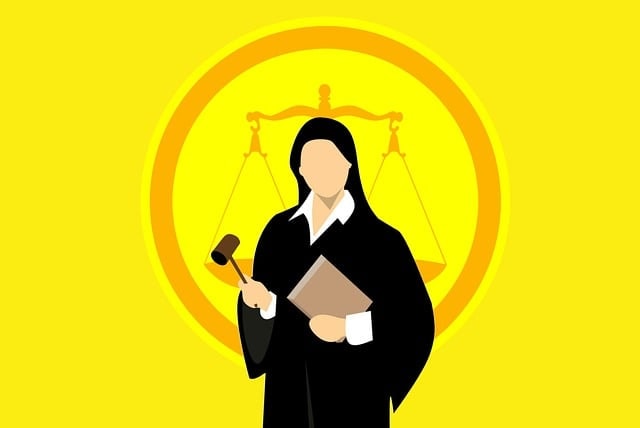Can You Sue Someone for Harassment? Understanding Your Legal Options

What Constitutes Harassment?
Harassment is a form of employment discrimination that violates Title VII of the Civil Rights Act of 1964, the Age Discrimination in Employment Act of 1967, and the Americans with Disabilities Act of 1990.
Any Harassment is unwelcome conduct based on race, color, religion, sex (including sexual orientation, gender identity, or pregnancy), national origin, older age, disability, or genetic information.
Harassment becomes unlawful when it creates a work environment that a reasonable person would consider intimidating, hostile, or abusive, or when enduring the conduct becomes a condition of continued employment. Harassment claims can involve various legal implications, potential compensation, and complexities in calculating damages and covering legal fees.
Anti-discrimination laws also prohibit harassment against individuals in retaliation for filing a discrimination charge, testifying, or participating in an investigation or lawsuit.
Types of Harassing Behavior
- Verbal harassment includes any form of unwelcome communication, such as emails, texts, or phone calls.
- Physical harassment includes any form of unwelcome physical contact, such as touching, grabbing, or pushing. This can escalate to physical assault, which is taken very seriously legally and may lead to criminal charges.
- Visual harassment includes any form of unwelcome visual display, such as posters, pictures, or videos.
- Harassment can also take the form of quid pro quo, where a supervisor or manager demands sexual favors in exchange for job benefits or promotions.
- Harassment can also be based on sexual orientation, including harassment of LGBTQ+ individuals.
Emotional and Psychological Impact of Harassment
Harassment can have a profound emotional and psychological impact on the victim. The experience of being harassed can lead to feelings of anxiety, depression, post-traumatic stress disorder (PTSD), and even suicidal thoughts. The emotional distress caused by harassment can be just as damaging as physical harm, and it’s essential to acknowledge and address these effects.
The emotional impact of harassment can manifest in various ways, including:
- Anxiety and Fear: Victims may feel constantly on edge, worried about when the next incident of harassing behavior will occur.
- Depression: Feelings of sadness, hopelessness, and a lack of motivation can overwhelm those who have been harassed.
- PTSD: Symptoms of PTSD, such as flashbacks, nightmares, and avoidance of triggers that remind them of the harassment, can develop.
- Loss of Self-Esteem: Victims may feel embarrassed, ashamed, or worthless due to the harassment.
- Difficulty Concentrating: Emotional distress can make it challenging to focus on work or daily activities.
It’s essential to recognize that the emotional and psychological impact of harassment can be long-lasting and may require professional help to overcome. Victims of harassment may benefit from seeking counseling or therapy to address these effects and work towards healing and recovery. Addressing emotional distress is a crucial step in the journey to reclaiming one’s well-being and sense of security.
Understanding Harassment Laws

Federal and State Protections
- The Equal Employment Opportunity Commission (EEOC) enforces federal laws that prohibit employment discrimination, including harassment.
- Federal law prohibits harassment based on sex, including sexual orientation and gender identity.
- State laws may also provide additional protections against harassment, including laws that prohibit harassment based on sexual orientation and gender identity.
- Employers with 15 or more employees are subject to federal anti-discrimination laws, while smaller employers may be subject to state laws.
Filing a Harassment Lawsuit

Who Can File a Lawsuit and What to Expect
Anyone who has experienced harassment can file harassment lawsuits against the person or organization responsible for the harassing behavior.
To file a lawsuit, you will need to gather evidence, including witness statements, emails, text messages, and other relevant documents.
You will also need to consult with an experienced attorney who can guide you through the legal process.
A harassment lawsuit can result in damages, including emotional distress, lost wages, and medical expenses.
Evidence Needed to Prove Harassment in Court
- To prove harassment in court, you will need to gather evidence that shows the harassing behavior was unwelcome and created a hostile work environment.
- This can include witness statements, emails, text messages, and other relevant documents.
- You will also need to show that the harassment was based on a protected characteristic, such as sex, race, or national origin.
- A reasonable person standard is used to determine whether the harassment was severe or pervasive enough to be illegal.
The Harassment Lawsuit Process
Investigation and Right to Sue
- Before filing a lawsuit, you will need to file a charge of discrimination with the EEOC or a state agency.
- The EEOC will investigate the charge and determine whether there is enough evidence to support a lawsuit.
- If the EEOC finds that there is enough evidence, it will issue a right to sue letter, which allows you to file a lawsuit in federal court.
- You will have 90 days to file a lawsuit after receiving the right to sue letter.
Trial Process and Procedures
- A harassment lawsuit will typically involve a trial, where both sides will present evidence and arguments.
- The trial will be presided over by a judge, who will make a decision based on the evidence presented.
- The trial process can be lengthy and may involve multiple hearings and motions.
- A jury may also be involved in the trial process, depending on the specific circumstances of the case.
Employer Liability and Prevention

Employer Responsibility and Liability
- Employers have a responsibility to prevent harassment in the workplace and to take prompt action when harassment occurs.
- Employers can be held liable for harassment by supervisors or managers, as well as for harassment by non-supervisory employees or non-employees over whom they have control.
- Employers can also be held liable for retaliation against employees who report harassment or participate in an investigation or lawsuit.
Preventing Harassment in the Workplace
Employers can prevent workplace harassment by implementing policies and procedures that prohibit harassment and provide a clear process for reporting and investigating harassment.
So, Employers should also provide training to employees on harassment and retaliation, and should take prompt action when harassment occurs.
Employers should also have a clear policy on retaliation and should take steps to prevent retaliation against employees who report harassment or participate in an investigation or lawsuit.
Defenses and Counterclaims

Common Defenses and Counterclaims
- Employers may raise defenses to a harassment lawsuit, including the defense that the harassment was not severe or pervasive enough to be illegal.
- Employers may also raise counterclaims, including claims that the employee is not entitled to damages or that the employee is responsible for the harassment.
- Employees may also raise defenses to a counterclaim, including the defense that the employer is responsible for the harassment.
Resolving a Harassment Lawsuit
Settlements, Mediation, and Arbitration
- A harassment lawsuit can be resolved through a settlement, mediation, or arbitration.
- A settlement is an agreement between the parties to resolve the lawsuit without going to trial.
- Mediation is a process where a neutral third party helps the parties to reach a settlement.
- Arbitration is a process where a neutral third party makes a decision based on the evidence presented.
Sexual Harassment in the Workplace
Understanding and Addressing Sexual Harassment
Sexual harassment cases are a form of harassment that is based on sex, including sexual orientation and gender identity.
Sexual harassment can take many forms, including quid pro quo, hostile work environment, and retaliation.
Employers have a responsibility to prevent sexual harassment in the workplace and to take prompt action when sexual harassment occurs.
Employees who experience sexual harassment should report it to their employer and seek support from a sexual harassment lawyer.
Role of Technology in Harassment
Technology has become a significant factor in harassment, with the rise of online harassment, cyberbullying, and digital stalking. Harassers can use technology to anonymously or pseudonymously harass their victims, making it difficult to track and prosecute them.
Types of technology-facilitated harassment include:
- Online Harassment: Harassers can use social media, online forums, and other digital platforms to send threatening or abusive messages, post defamatory content, or share intimate images without consent.
- Cyberbullying: Technology can be used to bully victims through mean or threatening messages, posting embarrassing content, or excluding them from online groups.
- Digital Stalking: Harassers can track their victims’ online activities, monitor their location, or hack into their devices.
The role of technology in harassment highlights the need for employers, educators, and individuals to take steps to prevent and address online harassment. This can include:
- Implementing Policies and Procedures: Establish clear guidelines for reporting and addressing online harassment.
- Providing Training: Educate employees and students on online harassment and digital citizenship.
- Encouraging Reporting: Support victims in reporting incidents of online harassment.
- Collaborating with Law Enforcement: Work with authorities to investigate and prosecute online harassment cases.
By acknowledging technology’s role in harassment, we can work towards creating a safer and more respectful online environment for everyone. Addressing technology-facilitated harassment is essential in the modern digital age, ensuring victims receive the protection and justice they deserve.
Protecting Yourself from Future Harassment
Resources and Support
- If you have experienced harassment, resources and support are available to help you.
- You can contact the EEOC or a state agency for information and assistance.
- You can also contact a harassment lawyer for guidance and representation.
- You can also seek support from a therapist or counselor to help you cope with the emotional distress caused by the harassment.
Conclusion
- Harassment is a serious issue that can have significant consequences for employees and employers.
- Understanding your legal options and seeking support can help you to protect yourself from future harassment.
- Employers have a responsibility to prevent harassment in the workplace and to take prompt action when harassment occurs.
- By working together, we can create a safer and more respectful workplace for everyone.Related Terms: sexual harassment claims, federal and state law, law firm, potentially pursue compensation













